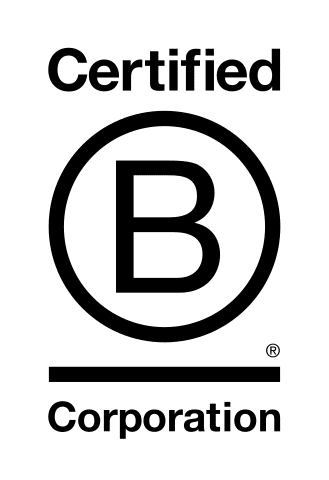FBC’s kick-off meeting on the role of fund boards and Responsible Investing raised a number of key issues already confronting fund board chairs, CEOs, iNEDs and their executive colleagues. Central amongst them are addressing the issue of definitions, data, and measuring up to one’s own expectations, but it is fundamentally about the client.
WHILE the world recently debated the path to Net Zero at COP26, a recent meeting of Fund Board Council’s (FBC’s) corporate membership considered the less glamorous (but no less important) question of the role of fund boards when it comes to responsible investing.
“Everything stems from the fiduciary duties you owe to your client”, said Ed Catton, Chief Risk Officer of Liontrust, one of our three panellists and subject matter experts, with HSBC Asset Management’s Head of Sustainability Erin Leonard’s commenting that insight that sustainability is “not just in the regulatory space … it’s across the full value chain”. And Nick Hunt, the Director of Strategy & Proposition at St James’s Place (SJP), reminded the meeting participants: “… you’re thinking carefully as a board about both the risk management aspect and the long term sustainable return aspect of what you’re trying to achieve on behalf of clients”.
These opening thoughts kicked off a wide-ranging discussion which covered evolving regulations and the thorny subject of measures of Environmental, Social and Governance (ESG) features of investments. The meeting, led by FBC’s senior adviser Brandon Horwitz, covered the limitations of excluding investments and the challenges of demonstrating engagement as part of a debate about how to monitor ESG investments in practice. Also explored, was how fund boards can obtain assurance to validate ESG assertions by their investment manager. This included considering the role of the authorised fund manager’s (AFM’s) own second line of defence (e.g. risk teams) as well as third parties such as the depository and research agencies.
Culture and value featured prominently in the 60-min discussion, with the question of whether investment management firms would meet the ESG expectations they place on investee firms, and how the Assessments of Value (AoV) process is increasingly focusing on the client benefits from sustainable investments.
Digesting the alphabet soup of responsible investments
There are a lot of acronyms involved in responsible investments, starting with RI itself! Others which are commonly used include:
ESG: Environmental, Social and Governance considerations, typically applied to an investment within a portfolio or a fund of such investments.
ESG integration: the broad application of ESG considerations into an investment management firm’s overall investment approach (i.e. not just the approach applied to ESG specific funds).
Engagement: refers to activities undertaken by investment managers to engage investee firms on ESG matters, including using the voting rights of equity investments to raise and support investee firm board resolutions to progress ESG initiatives (e.g. moving away from fossil fuels).
SFDR: the European Union’s Sustainable Finance Disclosure Regulation which cover disclosures of sustainability risks and the degree to which ESG considerations feature in the objectives of a particular product (in force from 2019 with certain disclosures applicable from March 2021 and others from 2022).
SDR: the UK’s Sustainability Disclosure Requirements (SDR), high level elements announced in 2021 with the aim to put detailed rules out for consultation from Q2 2022.
GHG and Scope 1, 2 and 3: Refers to greenhouse gases emitted by a company (such as Carbon Dioxide, C02). Scope 1 refers emissions that a company makes directly — for example while running its boilers and vehicles. Scope 2 are emissions it makes indirectly – like when the electricity or energy it buys for heating and cooling buildings, is being produced on its behalf. Scope 3 refers to all the emissions associated, not with the company itself, but that the organisation is indirectly responsible for, up and down its value chain.
Net Zero: a target of completely negating the amount of greenhouse gases produced by human activity, to be achieved by reducing emissions and implementing methods of absorbing carbon dioxide from the atmosphere.
Defining and monitoring ESG investments: a moving target
“A work in progress” was the general view of current definitions of what constitutes ESG investments. While some frameworks, such as the EU’s Sustainable Finance Disclosure Regulation (SFDR) are more mature than the UK’s recently announced Sustainability Disclosure Requirements (SDR), neither are considered to be clear enough to be applied unambiguously.
While the Financial Conduct Authority’s Dear AFM Chair letter (July 2021) spelled out high level expectations for firms launching new ESG funds, the absence of clear ESG classification standards remains a significant challenge.
To empower them to hold investment managers to account, fund boards need to be engaged in the various industry initiatives to find and share ESG data best practices. There was broad agreement that while the data is not perfect, one has to start somewhere.
Excluding non-ESG investments from portfolios was seen as the easiest, but probably least effective way to drive better sustainability outcomes. One FBC corporate member shared the example of a high carbon footprint firm which wanted to transition to cleaner technology, but which could be starved of the vital capital to do so, due to exclusion activity. This led to a key discussion of the need for forward-looking ESG measures which allow for the trajectory of investee firms, not just looking at their past emissions of greenhouse gases (GHGs).
All attendees agreed that engagement was key to driving change at investee firms, but acknowledged that demonstrating the effect of doing so was currently “messy”. Communication is key, especially making clients aware of how their money is supporting the ‘green transition’. This includes evidencing how investment managers are engaging with investee firms, including any examples of changes taking place in light of these activities.
However, the benefits of engagement may not be visible for months or even years as firms take time to change direction and invest in more sustainable practices. That is why we need fund board directors to be asking for evidence of the benefits of engagement and for this to be tracked through time.
Providing evidence to fund boards
The risk of greenwashing featured regularly in the discussion, with the key question of what assurance fund boards should seek that their funds are ‘doing what it says on the tin’. The consensus view was that clear definitions of ESG characteristics are key to facilitate effective monitoring.
While the fund’s investment manager has primary responsibility for investing in line with a fund’s mandate, the meeting agreed that second line of defence teams within AFMs play a key role. The risk team in particular could play a more proactive role in monitoring ESG funds, evolving in a similar way to how independent risk functions monitor other types of portfolio characteristics today. Some fund boards have appointed independent advisory committees to oversee their sustainable funds, providing an additional layer of governance to challenge the investment manager. Fund boards without a separate committee can also increase accountability by demanding robust Management Information (MI) on ESG characteristics of funds.
The role of the depositary in monitoring ESG funds generated significant debate. Some argued that the qualitative nature of ESG judgements did not lend itself to the quantitative monitoring approach of depositories. Many firms use external research agencies to certify their ESG approaches and it was acknowledged that this is likely to grow in importance as a source of assurance for fund boards.
Do investment managers measure up to their own standards?
The meeting debated the question of how many investment management firms (and AFMs) would meet the ESG standards they expect of investee firms. While investment firms typically have relatively modest Scope 1 and 2 emissions from their own operations, they arguably have very significant Scope 3 emissions from their investment portfolios.
This raised the question of how integrated ESG really is across firms’ investment approaches, outside of their specific ESG funds. The consensus was that transparency would drive changes in behaviour, starting with measuring ESG aspects across portfolios (and GHG emissions in particular). A key question was also raised as to whether AFMs should have their own ESG policies, which they could apply to benchmark their investment manager’s ESG policies.
Key takeaways and next steps:
FBC’s focus on Responsible Investing and the role of the fund board is the start of a dialogue with the corporate membership. The next meeting on this key theme is planned for March (see here for more and to book).
FBC is also planning a programme of work to address key issues arising from the discussion including:
- What kind of ESG monitoring MI comes to fund boards? What are current best practices and what challenges are firms facing? What improvements to MI can we expect in the near future?
- Are there different requirements when it comes to how fund boards monitor ESG funds in particular vs. ‘ESG integration’ across all funds in general?
- Should fund boards have their own ESG policies for use to benchmark their investment managers’ ESG policies?
- What is the current state of play and role of third party research firms in providing qualitative research ratings / assurance on ESG features of funds? Are fund boards making extensive use of these ratings or placing more reliance on internal / investment manager provided MI?
- What is the role of the depository when it comes to providing assurance to the fund board on ESG matters?
- What is the role of the second and third lines of defence (risk / compliance and internal audit) and external audit when it comes to providing assurance to fund boards on ESG matters?
- Are investment managers and AFM businesses role-modelling the best practices they expect from investee firms when it comes to ESG matters?




